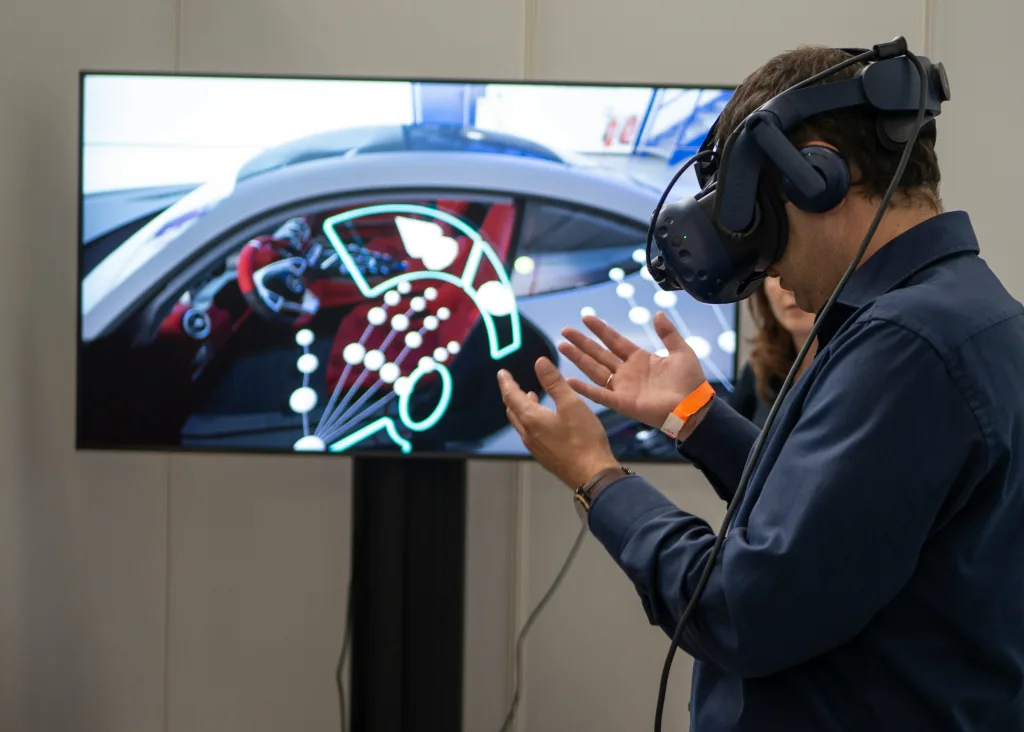VR stands for virtual reality. VR seeks to replace as many sensory experiences as possible with virtual, digital ones. Nowadays, we can replace visual and audio experiences. Virtual reality requires a visor with a screen or lens for each eye. Two screens allow you to achieve the 3D impression that is crucial to VR. Earplugs or noise-canceling headphones are also useful for this effect.
How Virtual Reality Works
VR employs cutting-edge 3D modeling and VR devices to create a digital virtual universe in which you feel immersed in that world.Among the different applications, its use in gaming is notably expanding, letting gamers to feel involved and lifelike while playing.
Normally, when people experience the real world, slightly distinct images are transmitted into each eye. This small distinction enables people to judge the distance and size of objects.VR goggles use a similar method, subtly changing the images seen by the left and right eyes to make the brain recognize it as a three-dimensional space.
Furthermore, many VR goggles contain focus adjustment mechanisms on the lenses, allowing users to tailor the focus to their preferences. This creates a high level of immersion.VR has two major types: watching and participatory. The primary goal of viewing-based VR is to observe 3D pictures using goggles that cover your field of vision.This sort of VR is utilized not only to receive information visually, but also to provide a space for experience and learning, such as when conducting classes and lectures, as well as medical training and support.
Participatory VR, on the other hand, lets you to move freely within the image while also touching and moving items within it.This sort of VR can deliver a more authentic experience by reproducing situations similar to real-life encounters in a virtual environment, such as in the tourist business.Both viewer-based and participatory VR are employed correctly for diverse scenarios and objectives, and they open up new possibilities for advancements and experiences in the entertainment business.
How does VR impact the media and entertainment industry
Virtual reality in entertainment offers endless possibilities. But the reason for this potential is firmly rooted in the metaverse. The metaverse is best conceptualized as a fusion between the physical and online worlds through various new technologies. You can fully immerse yourself in metaverse virtual worlds by donning a VR headset. But connections are fundamental to the meaning of the metaverse.
The definition of the entertainment industry is quite broad. As such, it is best to subdivide it into distinct branches when discussing virtual reality in entertainment. Some technologies and techniques may be shared between all of these branches. But each branch also has unique elements that open up new opportunities.
The film was one of the first demonstrations of virtual reality in entertainment. Even prestigious events such as the Cannes Film Festival were early users of VR. In fact, in 2016, it was the first to feature VR talks and short films in a dedicated VR section.
Virtual reality in entertainment systems, such as the Art Gallery VR app, is altering how visitors perceive art galleries. Standard hardware, such as laptops and tablets, already enhances the participatory nature of art. However, the Art Gallery VR software goes above and beyond by allowing knowledge to flow freely.
What is the future of VR in entertainment
VR is used in a wide range of industries and is a technology that is expected to have great future potential. From here, we will look at the outlook for market expansion.According to a Mizuho Research & Technologies Consulting report, the growth rate of the VR market is expected to continue to rise for some time to come.
Although the growth of hardware such as VR headsets is expected to slow, the scale of software is expected to expand, making it a field where further growth is expected in the future.In the future, if VR can be implemented to sense not only sight and hearing but also smell and taste, it is expected to be used in an even wider range of industries.
Conclusion
Because VR can create virtual spaces that are similar to the real world, it can be used to teach history lessons about events that occurred in the past, or to allow students to experience dangerous tasks through VR.The VR market is expected to continue to expand, and it is likely that new initiatives will emerge that are not currently being undertaken, making it a market with great potential for the future.



